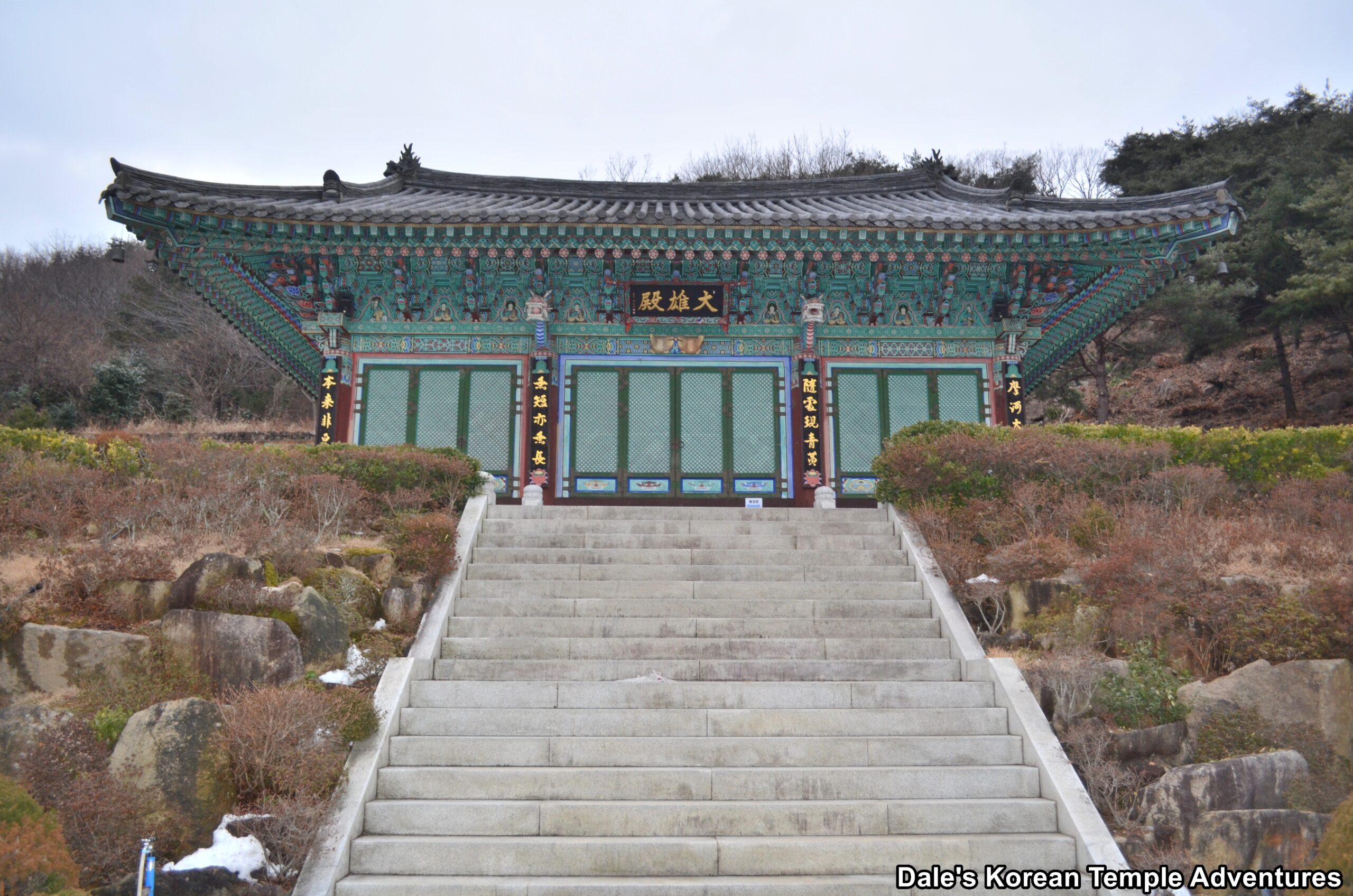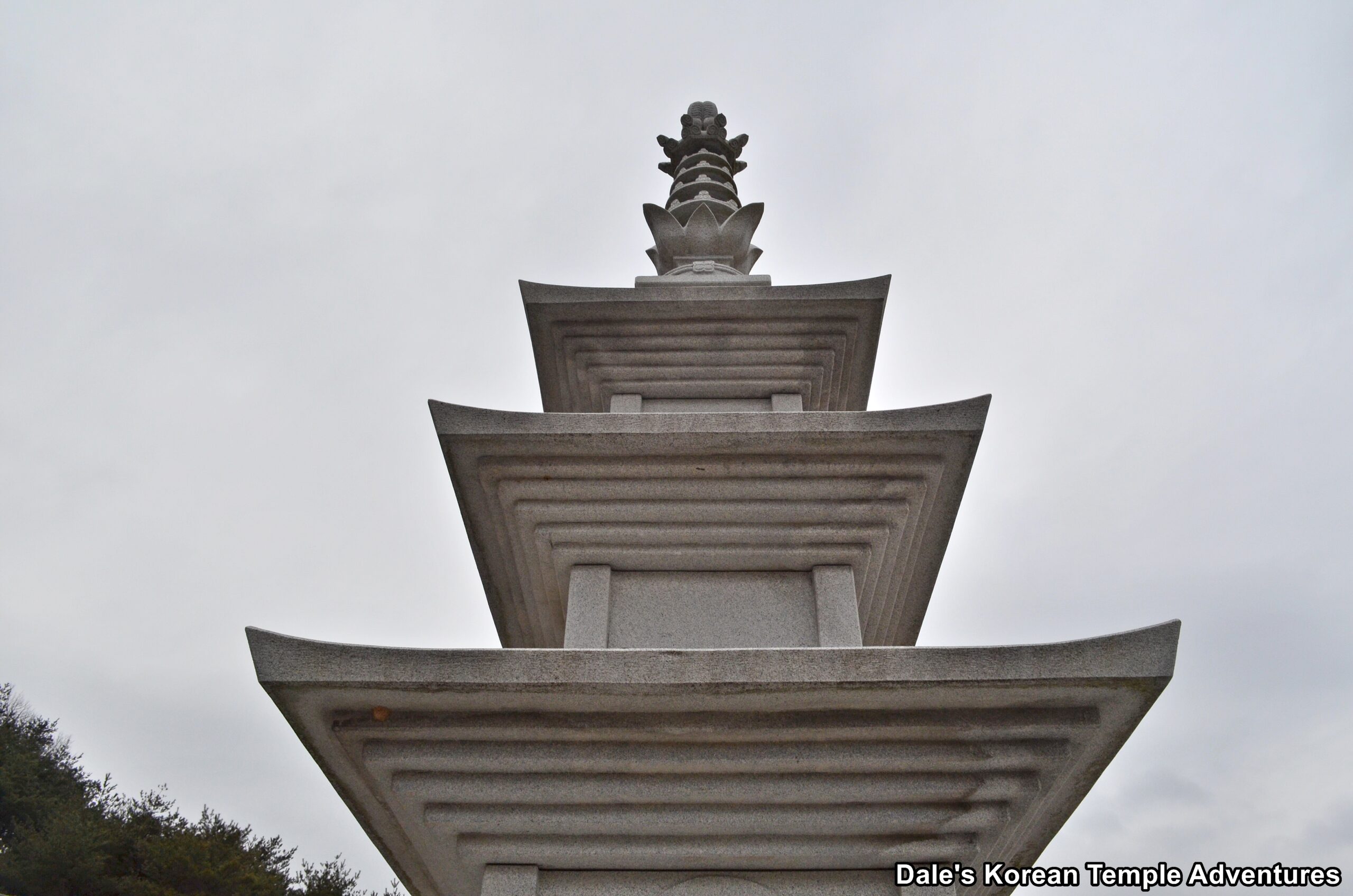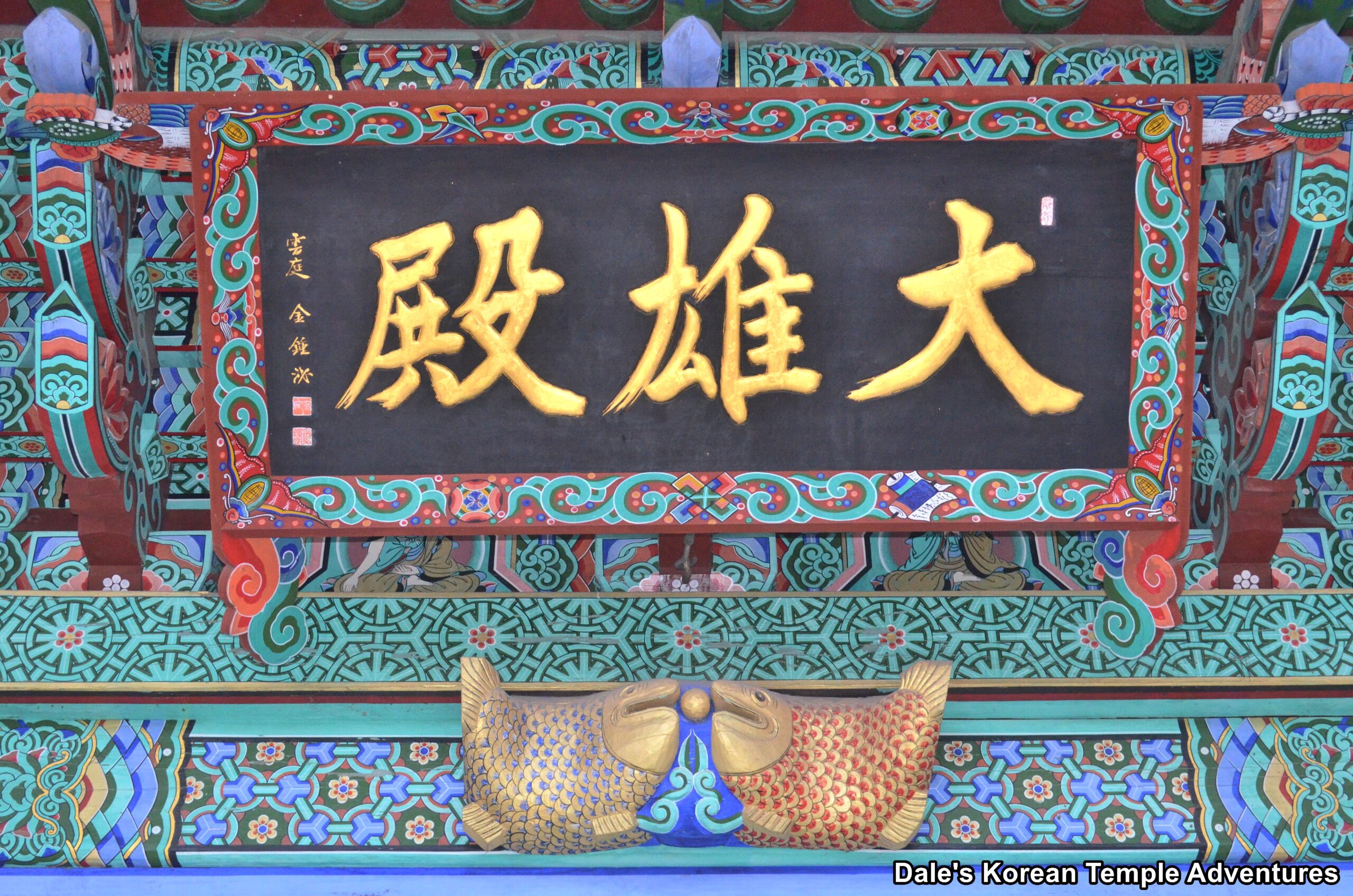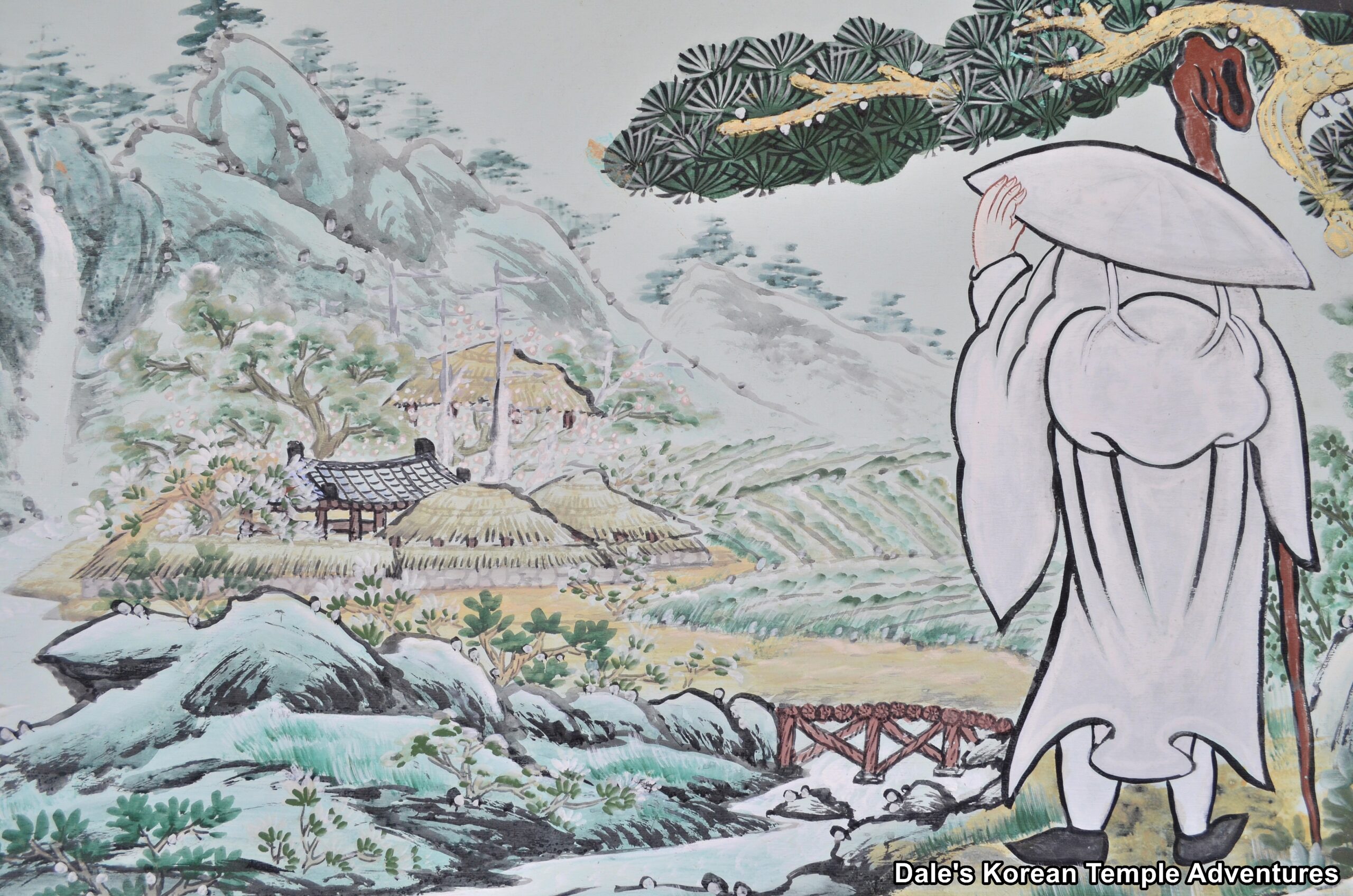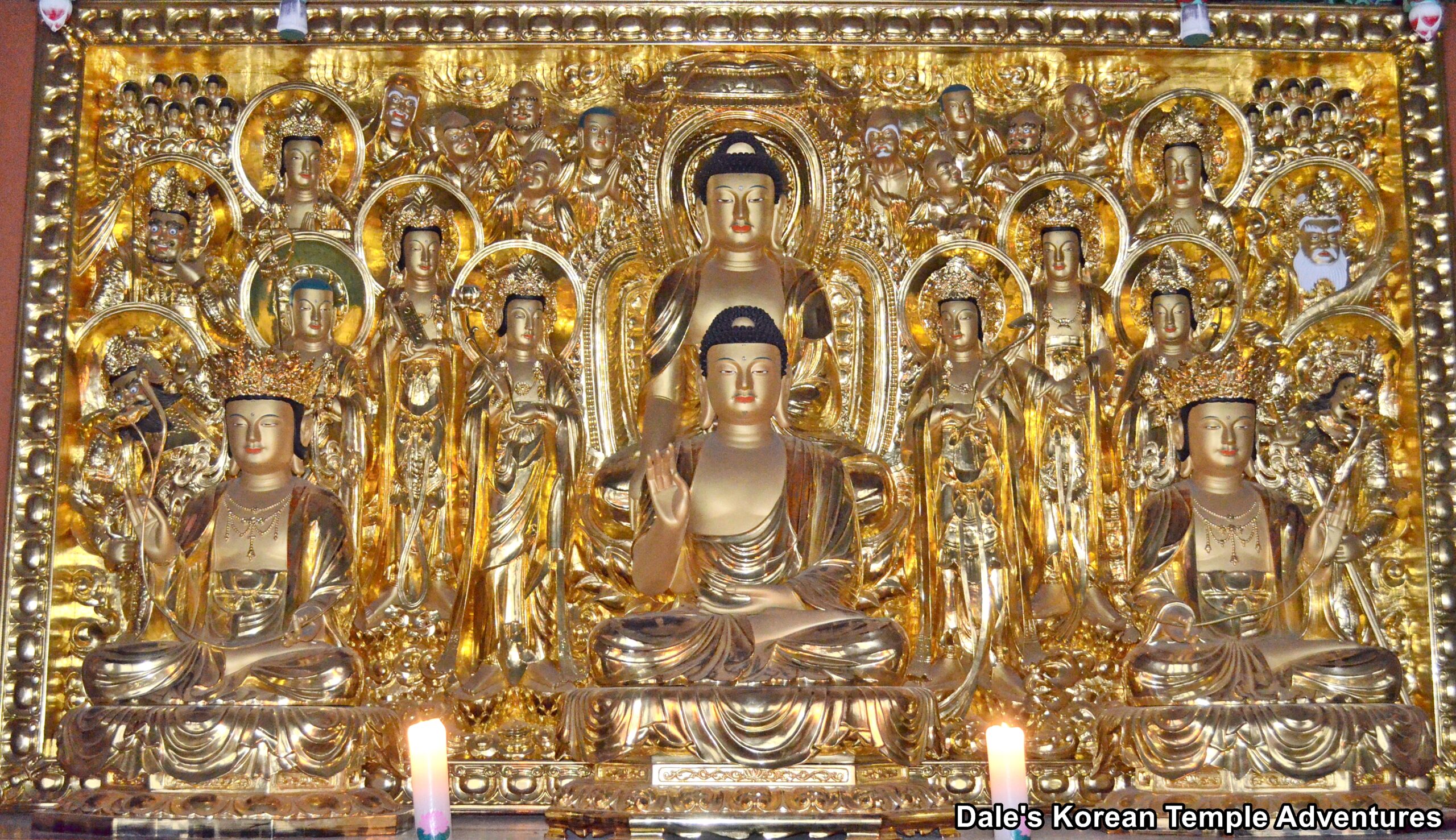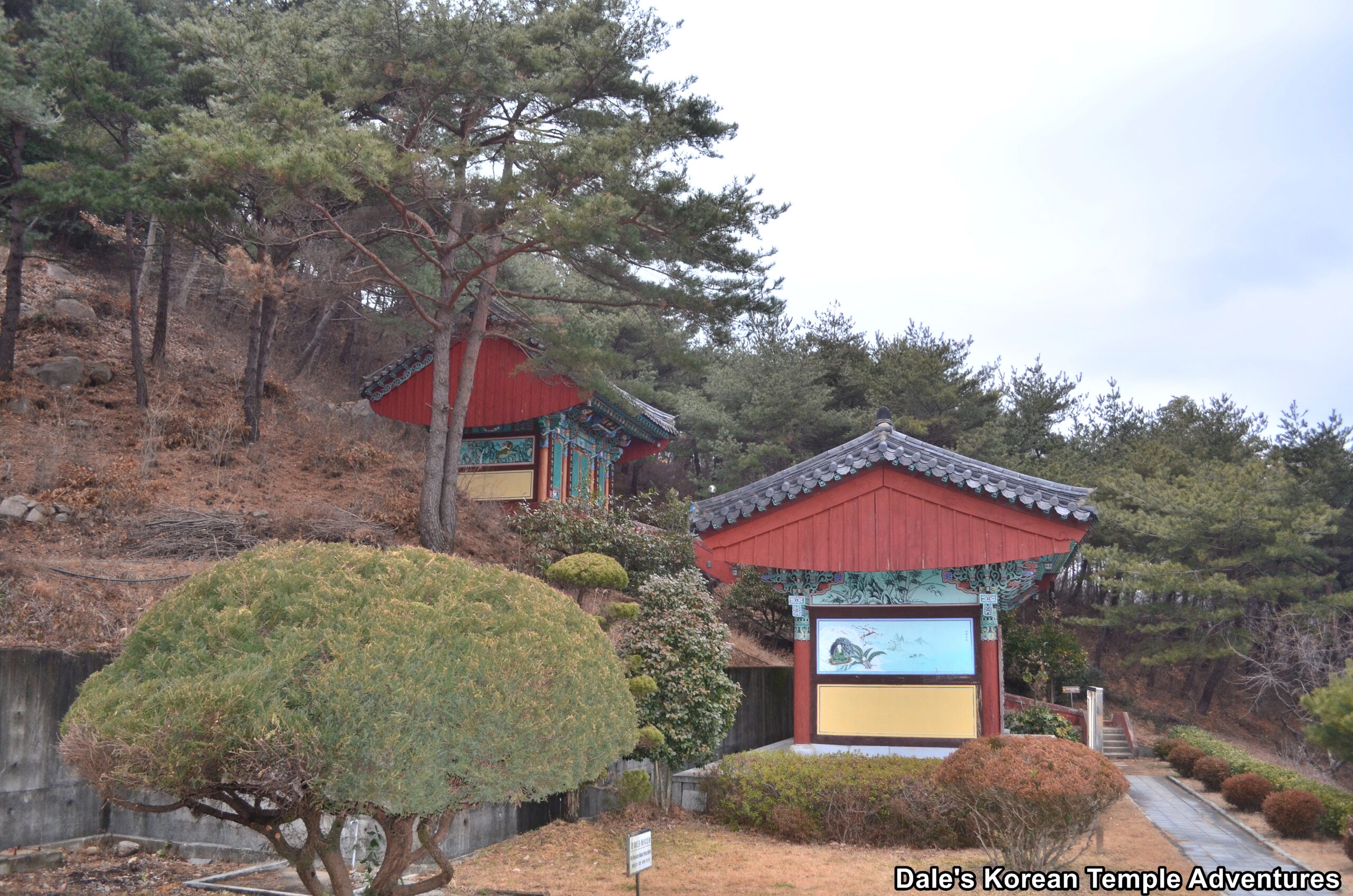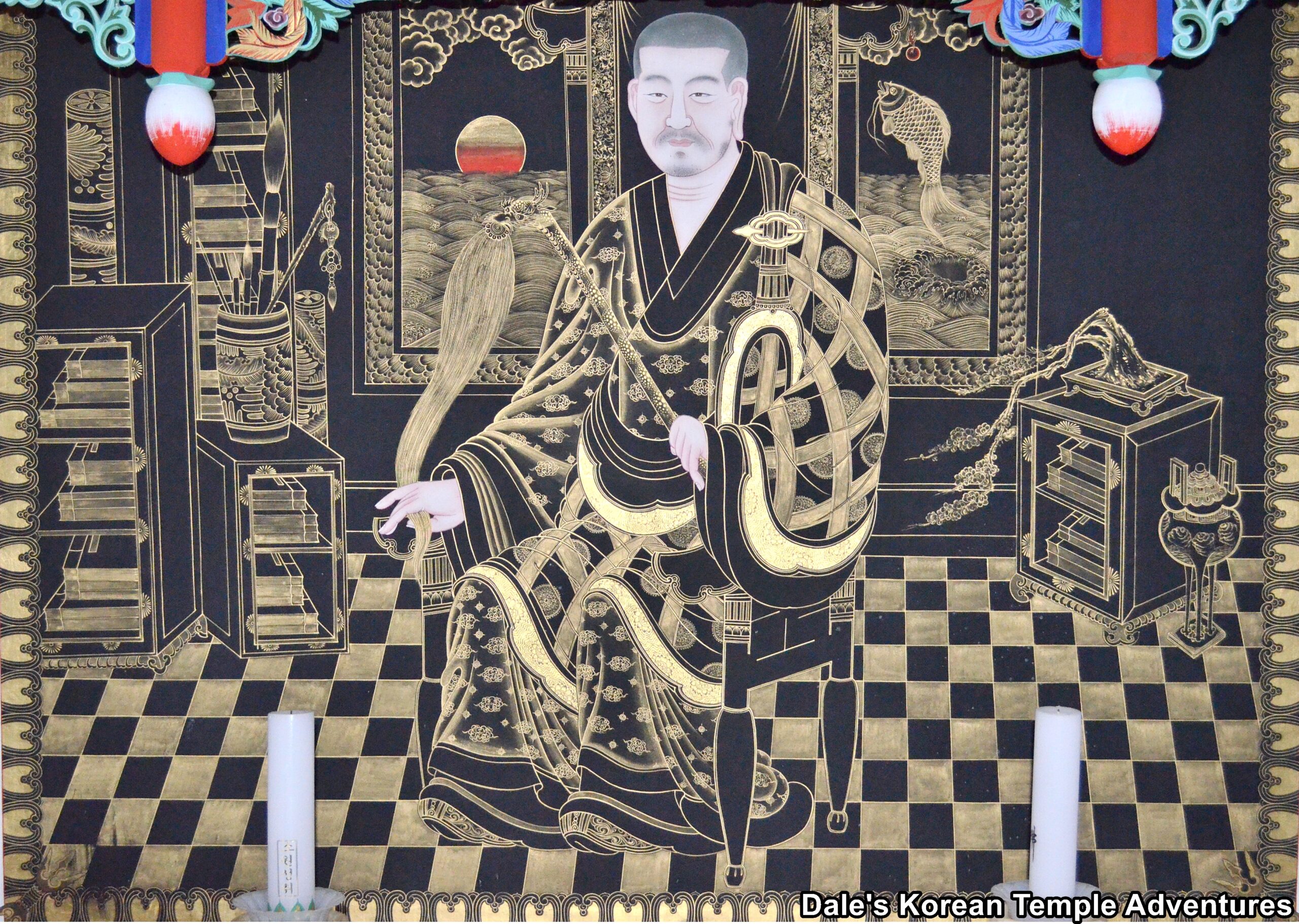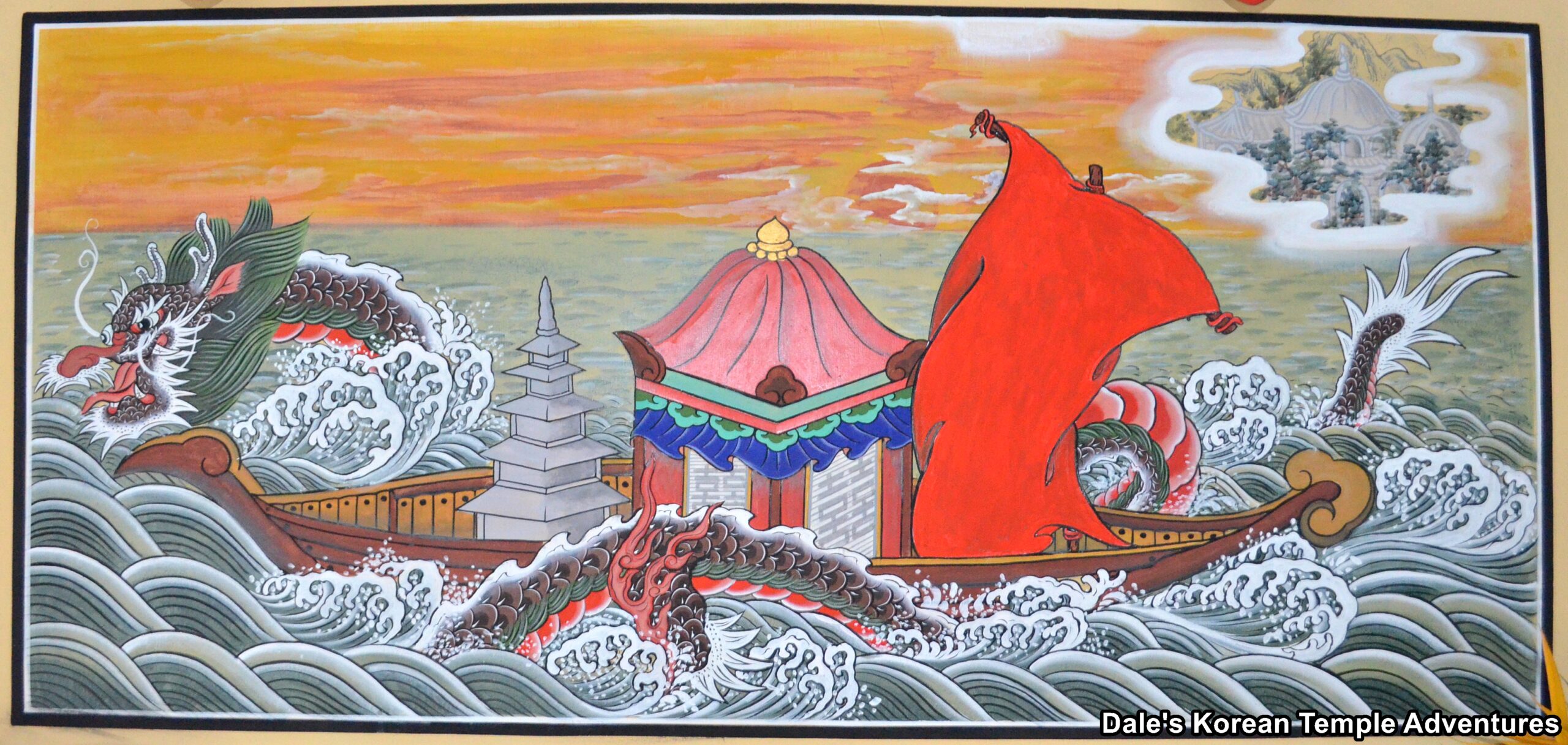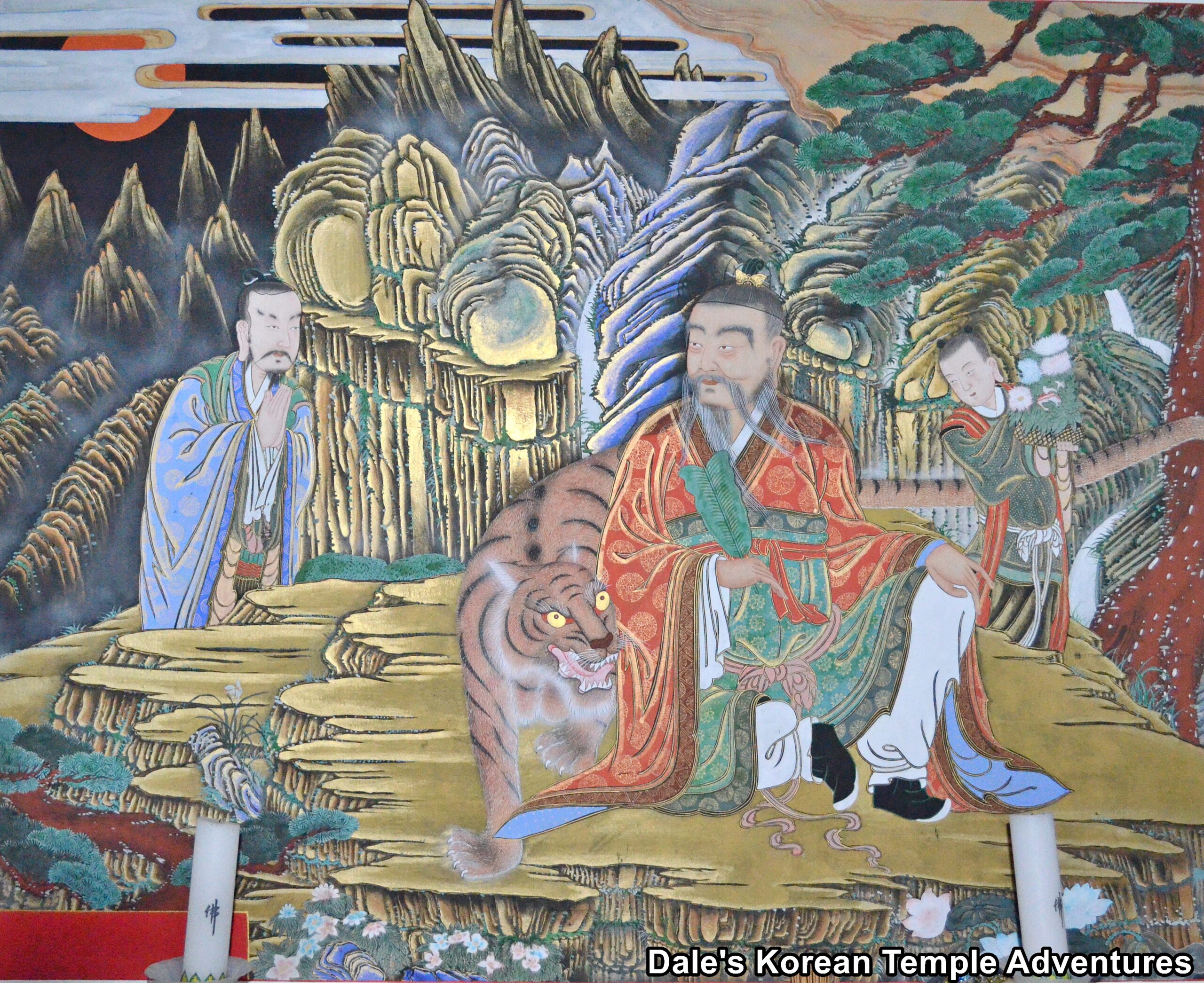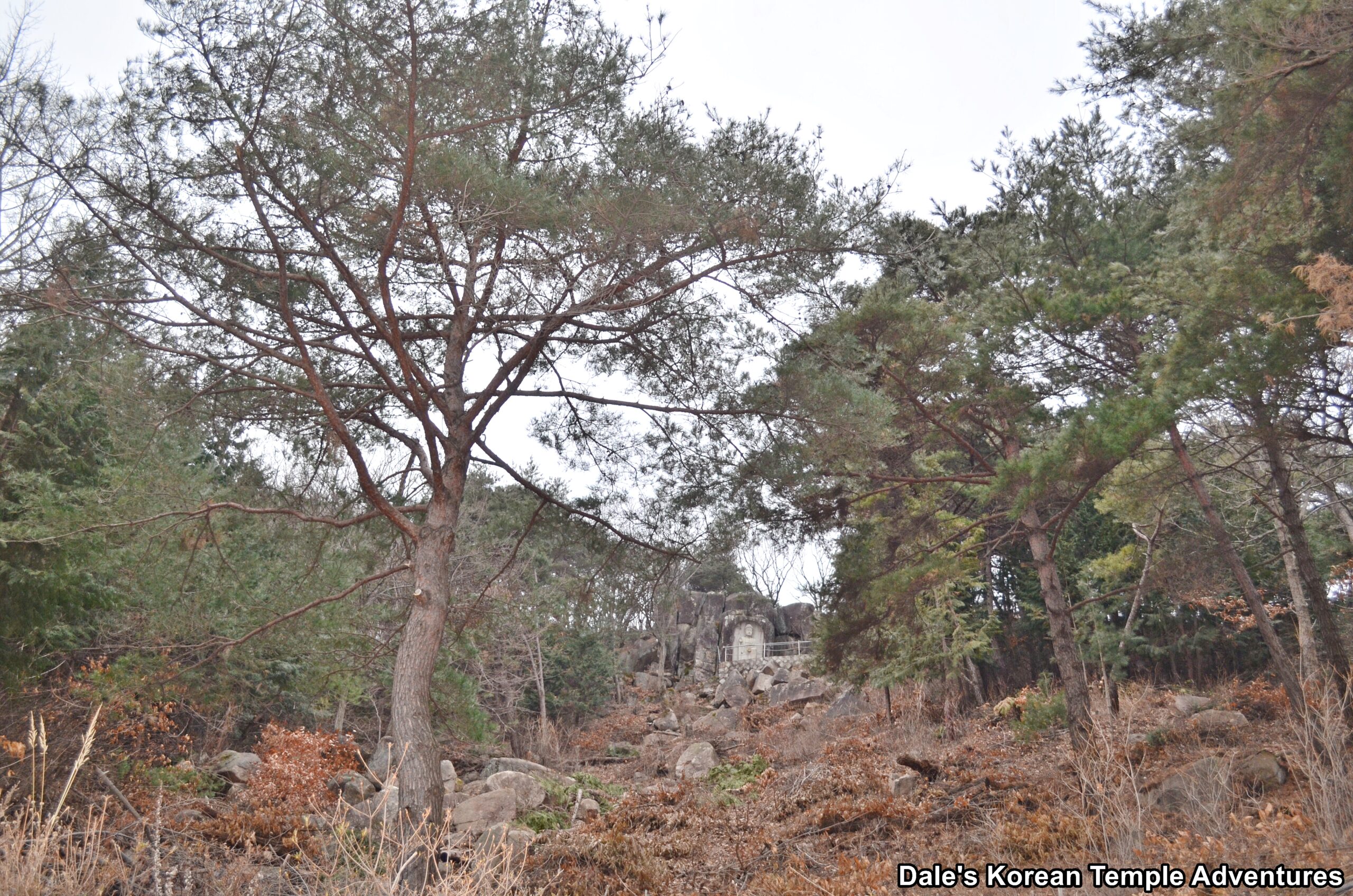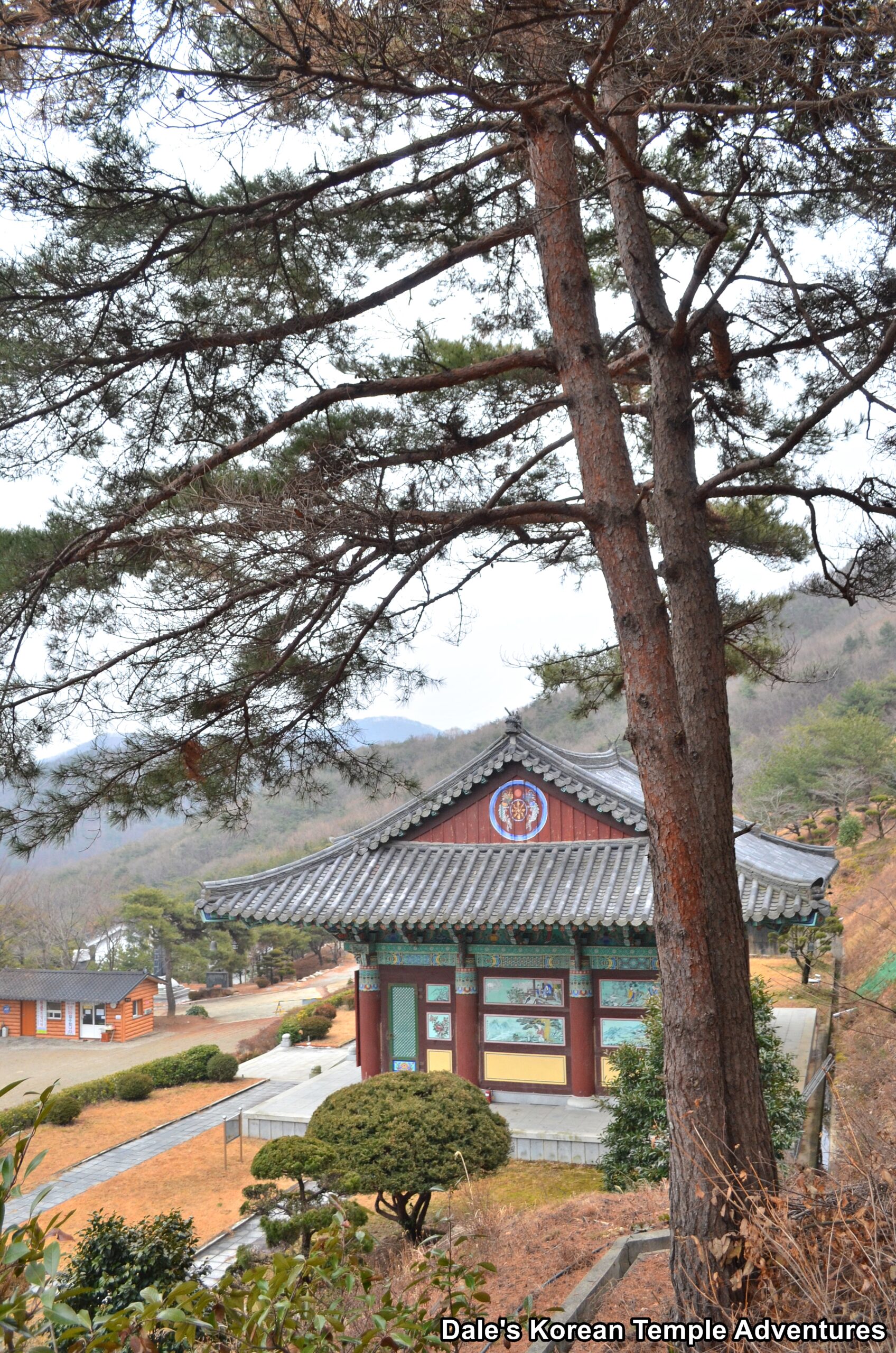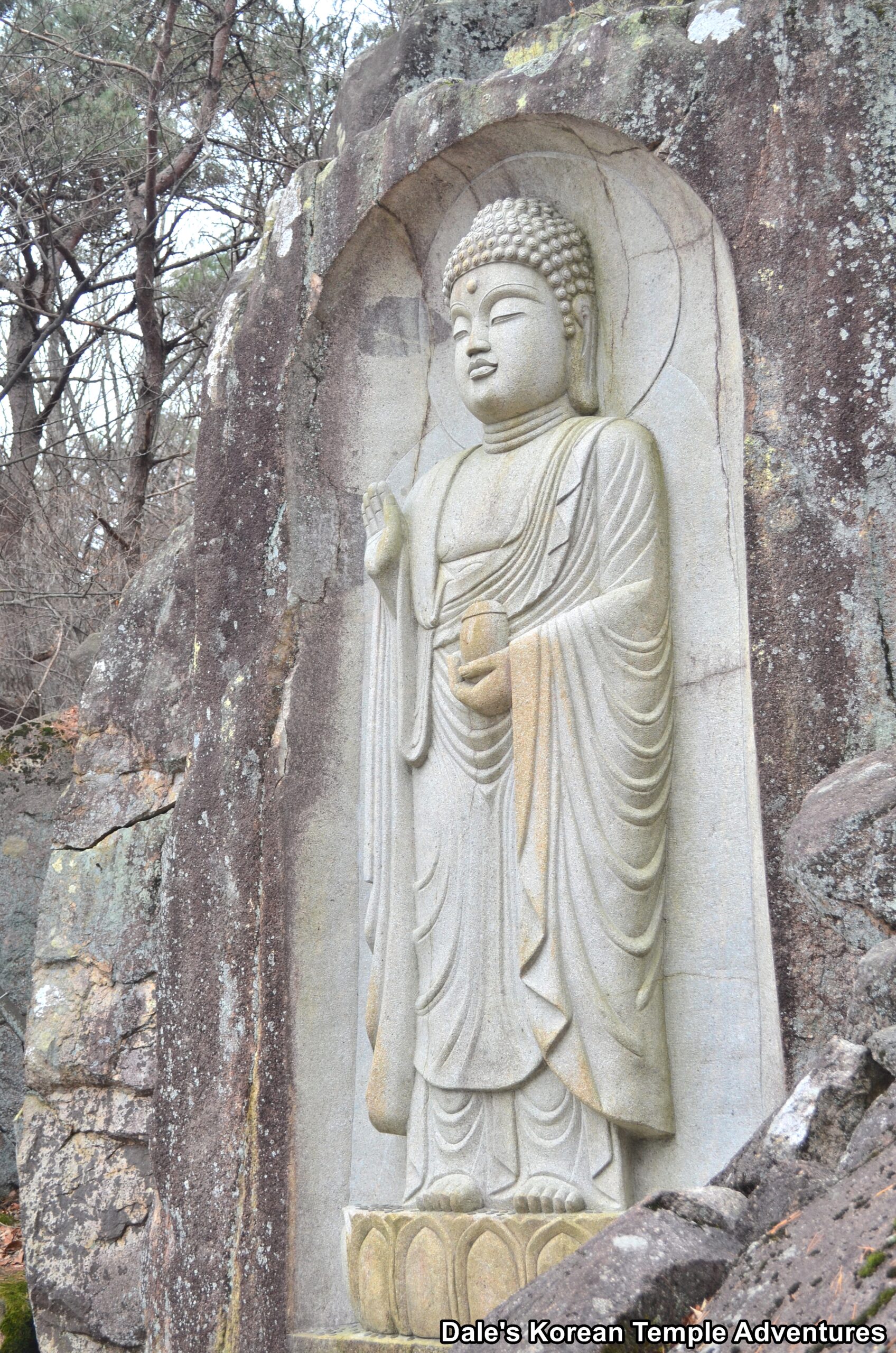Buljosa Temple – 불조사 (Gimhae, Gyeongsangnam-do)

Temple History
Buljosa Temple is located to the northwest of Mt. Sineosan (630.7 m) in northern Gimhae, Gyeongsangnam-do. The temple was first constructed in 1995 to help commemorate the monk Jangyu-hwasang, who puportedly first arrived on the Korean Peninsula in 46 A.D. Jangyu-hwasang, whose original name was Heo Bo-ok, was the brother of Queen Heo Hwang-ok. Queen Heo Hwang-ok (32-189 A.D.) would become the wife of Suro of Geumgwan Gaya (42? – 199 A.D.), who was the legendary founder of Geumwang Gaya (43–532 A.D.). Jangyu-hwasang, in his own right, was purportedly a prince. He, alongside twenty servants, sailed with his sister, Queen Heo Hwang-ok, to the Korean Peninsula. According to these legends, it’s believed that Jangyu-hwasang first introduced Buddhism to Geumwang Gaya. And to help memorialize the arrival of Queen Heo Hwang-ok, Jangyu-hwasang, and the introduction of Buddhism, King Suro of Geumgwan Gaya ordered two Buddhist temples to be constructed. They were Eunhasa Temple and Myeongwolsa Temple. And later, King Jilji of Geumgwan Gaya (r. 451-492 A.D.), the eighth king of the Gaya Confederacy, had a Buddhist temple constructed to commemorate where the king and queen first met. This temple was called Wanghusa Temple, and it was used to pray for the king’s ancestors and to hold Buddhist ceremonies. In later life, Jangyu-hwasang lived and meditated on Mt. Bulmosan and Mt. Jirisan, where he purportedly trained the seven sons of King Suro of Geumgwan Gaya in Buddhism. Eventually, and after intensive training and meditation, they all attained Buddahood after two years. The temple where they reached enlightenment is Chilbulsa Temple, or “Seven Buddha’s Temple” in English, on Mt. Jirisan.
Buljosa Temple belongs to the previously unheard of Jangyu-jong Buddhist Order.
Temple Layout
You first approach Buljosa Temple up a winding mountainside road. Eventually the temple comes into sight. The first thing to greet you, besides a long set of stairs that leads up to the temple courtyard, is the monks’ quarters off to the right. Up the mountainside, you’ll find the temple’s Buddhist shrine halls. Straight ahead is the Daeung-jeon Hall. Out in front of the main hall is a newer looking three-story stone pagoda. Wrapped around the exterior walls of the Daeung-jeon Hall are two sets of murals. The upper murals are the Palsang-do (The Eight Scenes from the Buddha’s Life) and the lower set of fading murals are dedicated to the Shimu-do (The Ox-Herding Murals). Up near the signboard for the main hall, which reads “Daeung-jeon” in hanja, you’ll find a pair of fish with a golden pearl between the two. Stepping inside the main hall, you’ll find a beautiful triad of statues centred by Seokgamoni-bul (The Historical Buddha) under a vibrant red datjib (canopy). Seokgamoni-bul is joined on either side by Munsu-bosal (The Bodhisattva of Wisdom) and Bohyeon-bosal (The Bodhisattva of Power). This triad is backed by a beautiful golden relief. To the left of the main altar is a modern Shinjung Taenghwa (Guardian Mural) and to the right is an equally modern mural dedicated to Jijang-bosal (The Bodhisattva of the Afterlife).
To the right of the Daeung-jeon Hall, and on the same lower courtyard level, is a shrine hall dedicated to Jangyu-hwasang. Painted around the exterior is the Bodhidharma and his encounter with Dazu Huike (487–593 A.D.). As for the interior, and stepping into this smaller sized shrine hall, you’ll find a painting on the main altar dedicated to Jangyu-hwasang. This painting, which is masterfully executed in black and gold, rests under a compact canopy. Joining this central painting is a mural dedicated to the monk and his journey to the Gaya Confederacy.
Just up the stairs, and to the right rear of the shrine hall dedicated to Jangyu-hwasang, is the Sanshin-gak Hall. The shaman shrine is surrounded by scenic paintings, as well as a fierce-looking tiger. Stepping inside the Sanshin-gak Hall, you’ll find a rather uniquely painted style of mural. Have a look at this rather original painting with the sun shrouded in mountain clouds.
The final thing that visitors can explore at Buljosa Temple is a large, stone relief dedicated to Yaksayeorae-bul (The Buddha of Medicine, and the Buddha of the Eastern Paradise). This relief, and corresponding shrine, crowns the heights of the temple. To get to the relief dedicated to Yaksayeorae-bul, you’ll need to follow the trail that starts to the immediate right of the Sanshin-gak Hall. Follow this trail up the mountainside for 250 metres, until you come to a mountain ridge that steeply looks out over the temple grounds, as well as the rolling mountains and valleys off in the distance. The relief of Yaksayeorae-bul stands at least five metres in height, and it’s skillfully composed with a medicine bowl appearing in Yaksayeorae-bul’s left hand. And the right hand of the relief forms the “gesture of fearlessness” mudra.
How To Get There
From the Gimhae Intercity Bus Terminal, which is called the “Oedong Terminal – 외동터미널,” you can either take Bus #71 or Bus #72. You’ll then need to get off at the Gwangje Bus Stop, which is 40 minutes away, or 24 stops. From the bus stop, and as you’re looking away from the bus stop, you’ll have to head right for about 100 metres on the main road. At this point, you’ll see the sign for Buljosa Temple that leads you up the mountain and towards the temple. Be careful on this road because it’s busy and there’s no sidewalk.
Overall Rating: 7/10
One of the more interesting encounters I had at a temple was at Buljosa Temple and the paranoid abbot. However, if the abbot isn’t there, the temple is quite nice with the beautiful interior of the Daeung-jeon Hall, the unique Jangyu-hwasang shrine hall, the striking Sanshin mural, and the relief dedicated to Yaksayeorae-bul up the mountainside. While little known, the temple has some beautiful features.
